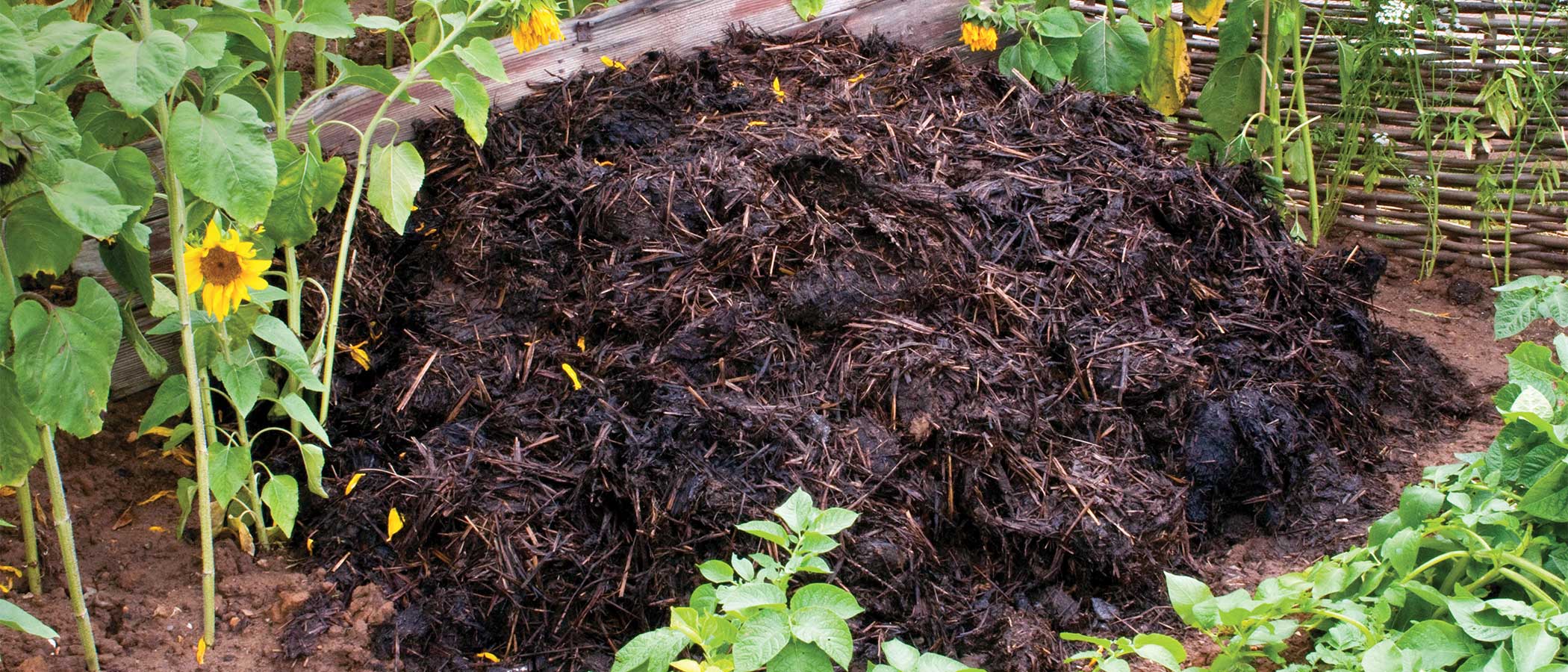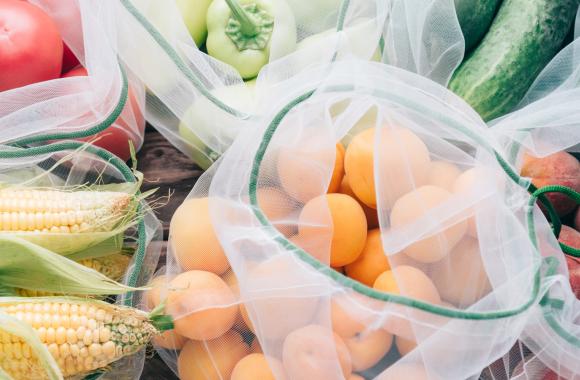Composting
Composting can range from backyard bins to industrial-scale operations. Regardless, it converts organic waste into soil carbon, averting landfill methane emissions in the process.
Reduced/Sequestered
2020–2050
To Implement
Operational Savings
Impact
In 2015, an estimated 38 percent of food waste was composted in the US; 57 percent was composted in the EU. If all low-income countries reached the US rate and all middle-income countries achieved the EU rate, composting could avoid methane emissions from landfills equivalent to 1.13–1.40 gigatons of carbon dioxide by 2050. That total excludes additional gains from applying compost to soil. Compost facilities cost less to construct than to operate, which is reflected in the financial results.
Introduction
For every million metric tons of organic wastes that decompose, 469 metric tons of carbon dioxide equivalent greenhouse gases in the form of methane are released. Composting—the conversion of such waste into a useful soil amendment—reduces those emissions by more than 50 percent. This solution replaces the disposal of biodegradable urban organic waste in landfills. The practice has other benefits as well, including potential carbon biosequestration benefits from the use of compost as a soil amendment and potential savings from reducing demand for nitrogen fertilizers.
Methodology
To quantify the benefits of composting, we first forecast total global urban organic waste production from 2014 to 2050. Next, we determined the current composting rate of existing municipal solid waste facilities, forecasted the future plausible adoption of composting to 2050, and calculated emissions mitigated relative to a reference scenario that keeps adoption of composting fixed at the current percentage of global organic waste.
Total Addressable Market
We based the total addressable market for organic waste on global urban organic waste production from 2014 to 2050. We calculated the global market using a composite of forecasts, including a linear interpolation of World Bank data from 2010 to 2025, an extrapolation to extend those projections to 2050, and a per capita extrapolation using IPCC data and the UN’s 2015 median urban population forecast. We expect that total global organic waste by 2050 will be around 1,979 million metric tons. We estimated 13 percent of urban organic waste was composted in 2014.
Adoption Scenarios
Global compost production in 2015 was 106 million metric tons. Due to the lack of reliable future projections of the growth of composting, we estimated adoption based on 2000–2017 urban composting rates in the US and EU—approximately 38 percent and 57 percent, respectively—with negligible rates in lower- and middle-income countries. Adoption could be increased by optimizing composting scale and costs, increasing the market value of compost, and subsidizing source-separated collection, perhaps through increased regulation and cost burden on landfill practices.
We calculated impacts of increased adoption of composting from 2020 to 2050 by comparing two growth scenarios with the reference scenario.
- Scenario 1: Composting increases to 442.49 million metric tons of organic waste (29 percent of the total addressable market).
- Scenario 2: Composting increases to 312.34 million metric tons (20 percent of the total addressable market).
Emissions Model
We calculated emissions data for each scenario using variables selected from sources that measured the comparative emissions of composting and/or landfilling. We normalized the variables to total direct emissions per million metric tons of organic waste because a variety of sources reported complete emissions and some segmented emissions data by collection, transportation, processing, and other indirect measures. Sources include the EPA WARM model, the Composting Council of Canada, and meta-analyses such as those by Zaman et al. (2016).
Financial Model
All monetary values are in 2014 US$.
We reached financial results by comparing the costs of creating and operating compost facilities with those of creating and operating sanitary landfills for an equivalent volume of organic waste. We assumed collection and transportation costs to be the same for each approach. We calculated the cost of establishing new compost facilities over the period to be US$110 billion, which is US$61 billion less than the cost of establishing new landfills. However, operating compost facilities costs more than operating landfills, even considering the revenue generated from the sale of finished compost. We generated the data used for modeling both composting and landfilling from a mix of values, including worldwide averages reported by World Bank’s “What a Waste” and the UN Environment Programme (UNEP).
Integration
For integration, we first considered the reduction of organic waste from our Reduced Food Waste solution (which already incorporated consideration of Plant-Rich Diets adoption) and the increase in organic waste from an assumed compostable percentage of the increased adoption of the Bioplastics solution, to refactor the market for composting for each year. We then compared modeled compost adoption with the new organic waste market and adjusted if needed (e.g., adjusted down if composting adoption exceeds a reasonable percentage of organic waste).
Results
We found a potential of 1.13 gigatons of carbon dioxide equivalent greenhouse gas reductions in Scenario 1 over 2020–2050 with a lifetime cost of US$4.18 billion and a marginal savings to implement of US$26.90 billion.
For Scenario 2, the emissions avoided amount to 1.40 gigatons. Net lifetime cost is US$1.73 billion and the net savings to implement is US$35.50 billion.
Discussion
The impact of composting is limited by the amount of organic waste created. There are some indicators that as regions develop, the per capita amount of waste increases, then plateaus. All scenarios modeled are highly dependent on a significant increase in adoption in the Asia (sans Japan) region. While several European countries already have achieved less than 3 percent waste to landfills, we chose more conservative growth scenarios for both China and Asia (sans Japan) to reflect the uncertainty of growth of composting in the face of current investments in waste-to-energy facilities in the region. If China is slow to adopt composting, the overall global mitigation impact of composting will likely need to be discounted further.
The financial case for adoption of composting is distorted by local regulations and compost demand. Although the model shows a potentially uninspiring business case for adopting composting due to operating costs, an increase in market price of finished compost (driven by demand of more climate-friendly agricultural practices) and/or a decrease in the operating costs through innovation and process design could create a financial advantage for composting over landfilling. Where regulations, space, and logistics create cost barriers to landfill expansion, there is already a self-evident business case for composting.
In conclusion, this analysis suggests that composting can grow to offset a significant portion of landfilling, while reducing climate emissions. This is limited by the education required for composters and consumers, as well a lack of financial advantage, particularly in areas with informal and unregulated dumps.
References
US EPA. (2006, October 19). Waste Home - Waste Reduction Model (WARM) | Climate Change - What You Can Do | U.S. EPA. Retrieved March 26, 2015, from https://www.epa.gov/warm
UN Environment Programme (UNEP). (2015). UNEP Global Waste Management Outlook 2015. Accessed at: http://apps.unep.org/publications/index.php?option=com_pub&task=download&file=011782_en
Hoornweg, D., & Bhada-Tata, P. (2010). What a Waste: A Global Review of Solid Waste Management. The World Bank. Retrieved from https://datatopics.worldbank.org/what-a-waste/
Zaman, A. U. (2016). A comprehensive study of the environmental and economic benefits of resource recovery from global waste management systems. Journal of Cleaner Production, 124 pp. 41-50. Accessed at: http://linkinghub.elsevier.com/retrieve/pii/S0959652616002675
What You Can Do
If your company has operations in low- and middle-income countries, support the development of compost facilities there.
At home, use every bit of produce you can—then compost the bits you can't.
- Expand your knowledge by exploring another Drawdown solution.
Co-benefits
Composting reduces waste sent to landfills which is often incinerated and generates carbon emissions.
Reducing landfill waste can reduce air pollution and associated respiratory illnesses such as chronic obstructive pulmonary disease, asthma, and pneumonia.
When used for gardening or farming, compost reduce the need of fertilizers and pesticides in soils and helps improve soil health and thereby increase agricultural yields.
Compost retains water, prevents erosion, reduces runoff, establishes vegetation, and improves downstream water quality by retaining pollutants like heavy metals, nitrogen, phosphorus, oil, grease, fuels, herbicides, and pesticides.










